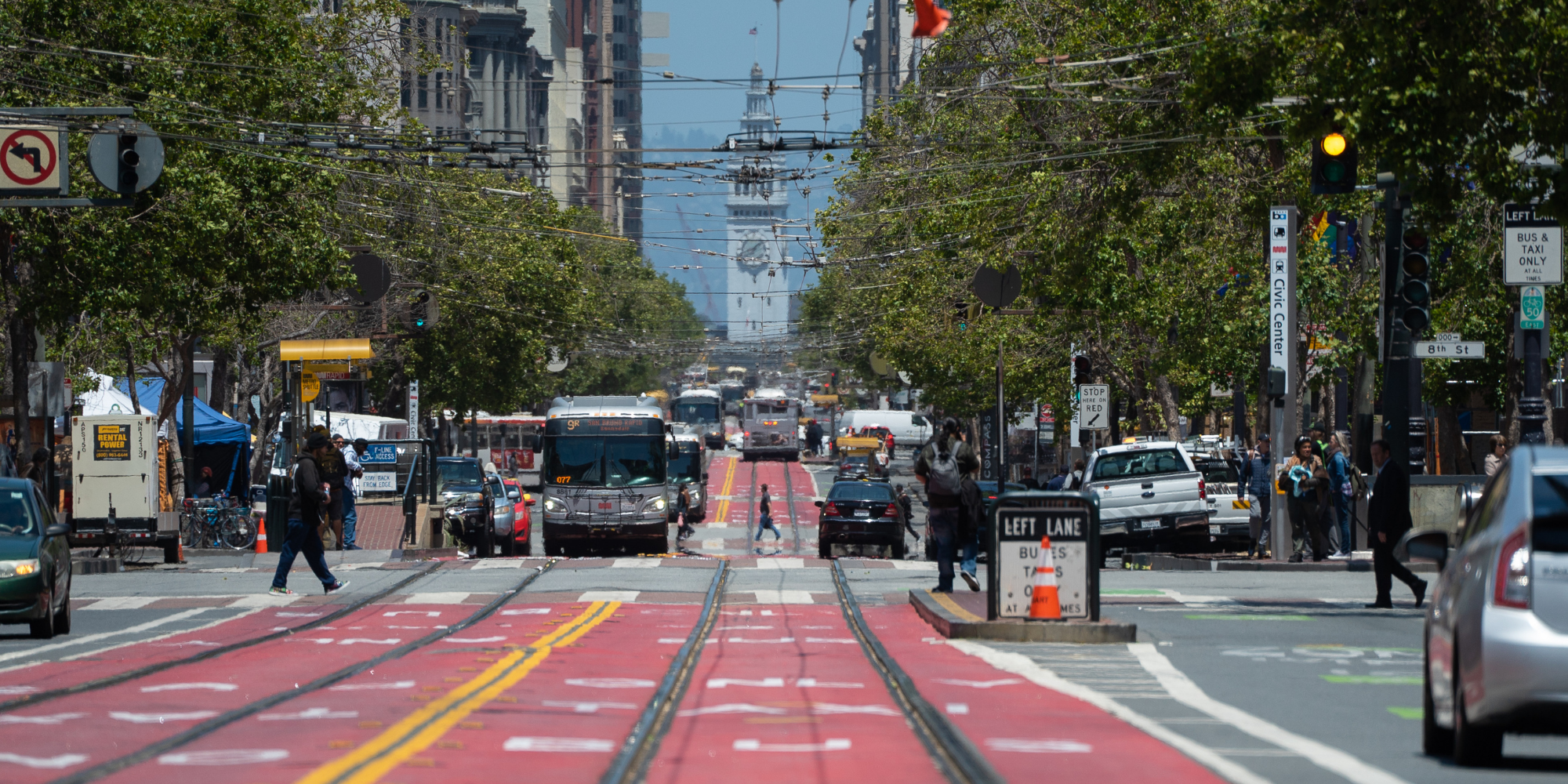Key Highlights: Communities can reduce their carbon emissions through the new Carbon Reduction Program (CRP), a federal formula program within the Bipartisan Infrastructure Law (BIL).
Cities, towns and villages seeking ways to reduce their carbon emissions through a wide range of transportation projects should get to know one of the larger new infrastructure programs the new Carbon Reduction Program (CRP), a federal formula program within the Bipartisan Infrastructure Law (BIL). The Carbon Reduction program is administered by the Federal Highway Administration and sends $6.4 billion in formula funding to states and metropolitan areas over the next five years. CRP will help states develop carbon reduction strategies with required input from Metropolitan Planning Organizations (MPOs). States and MPOs must create their CRP strategy by November 15, 2023, but states and localities can begin using the funds now before the plans are developed and reviewed. The CRP strategy plans will identify projects and strategies to reduce carbon emissions on and off-roadways and these projects can be supported by other federal funding programs such as zero-emission vehicles, congestion pricing, charging infrastructure and other BIL funds that help to reduce carbon emissions in transportation.
With the formula funding that a state receives, 65 percent must be obligated to the following urban areas in proportion to their relative shares of a state’s population:
- Urbanized areas with an area population greater than 200,000
- Urbanized areas with an area population of at least 50,000 but no more than 200,000
- Urban areas with a population of at least 5,000 and no more than 49,999
- Areas with a population of less than 5,000
The remaining 35 percent of a state’s CRP funds may be used in any area of the state.
Projects Eligible for CRP funding
Carbon Reduction Program funds can be used on a wide range of transportation emission reduction strategies including, but not limited to:
- Funding public transportation projects such as the expansion or creation of dedicated bus lanes including a bus rapid transit corridor.
- Developing transportation alternative infrastructure which includes the planning, construction and design of nonmotorized forms of transportation like sidewalks, pedestrian walkways, bike lanes or trails and microbility projects including bike shares.
- Traffic mitigation and control projects, such as supporting congestion pricing and implementing electronic tolling. This also includes utilizing technology for capital improvements to create more efficient routes, replacing streetlights and traffic controls with energy-efficient alternatives, and operating traffic monitoring technologies.
- Supporting alternative fuel vehicles (electric vehicles, hydrogen, natural gas or propane) including the purchasing of the vehicles themselves or the construction of the equipment to power and maintain them.
A complete list of eligible projects is available in the CRP fact sheet.
How Cities are Reducing Transportation Carbon Emissions Today
Cedar Rapids, Iowa released their Community Climate Action Plan in 2021 after passing a Climate Resolution in 2020. Some of the planned actions Cedar Rapids outlined to reduce carbon emissions to be net-zero by 2050 could be a perfect recipient of CRP funding. Using the city’s complete streets policy, neighborhood action plans and economic development programs, Action Item 7 sets the goal of creating “15-minute neighborhoods” to reduce sprawling development, which the city estimates costs residents 2-3x more in transportation and carbon per development. Action Item 8 seeks to enhance Cedar Rapid’s transit and shared transportation options in under-resourced communities. The city already has a bike and scooter share program and a Via Ride Service but seeks to expand micro-transit options such as using golf carts. To reach the city’s 2030 goal, residents will need to drive two percent less each year. Lastly, Cedar Rapids plans to develop a readiness policy for electric vehicle (EV) infrastructure and emerging low-emitting technologies, as 19 percent of Cedar Rapid’s vehicles will need to be electric to meet their 2030 target.
During the past few years the City of Mercer Island, WA has done a range of work in the transportation space to reduce emissions. In 2018 the city created pilot programs with LimeBike, Lyft and Uber for residents to use electric-assist rental bikes to get around the island and provide rideshare for first/last-mile connections. Throughout 2019 the city continued to improve its bicycle route signage around the town center, the I-90 trail and the loop around the island. Mercer Island has also increased the number of public electric vehicle charging stations, which has increased the number of EVs and plug-in hybrid vehicle registrations from 27 in 2011 to 1282 by the end of 2021. All these efforts will help Mercer Island reduce their carbon emissions by 80 percent from 2007 levels by 2050.
Municipalities are also investing in electric vehicles and the necessary infrastructure to reduce carbon emissions. The city of Cincinnati, Ohio plans to have an electrified fleet by 2035. It is currently at 20 EVs out of its fleet of about 2,400. Cincinnati is also in the early stages of revisiting its Green Cincinnati Plan with the goal of reducing the city’s carbon emissions by 80 percent by 2050. Last month, Oswego, New York opened six new electric vehicle charging stations throughout the city with level-2 chargers that are free to use by the public. To purchase and install the charging stations the city worked with NYSERDA, OMNI Renewables, National Grid and Livingston Energy Group.
Get Ready to Apply
Partner with your State DOT and MPOs
Local leaders should start by engaging their local MPO and state department of transportation (DOT) offices as they seek to build their Carbon Reduction Program strategies where key projects must be included. According to CRP guidance, “projects must be identified in the Statewide Transportation Improvement Program/ Transportation Improvement Program and be consistent with the Long-Range Statewide Transportation Plan and the Metropolitan Transportation Plan(s).” This creates the need for state, regional and local officials to work together to identify key projects for CRP, and local elected officials will be the best advocates for the projects in their community.
Additionally, CRP funds can be used before a strategy is created. To get access to the funding as early as possible, local leaders should come to the table with shovel-ready ideas or projects that reduce transportation emissions. With funding for the Carbon Reduction Program going through state DOT offices, each governor’s administration may tailor their program and strategy to reflect their priorities. Local leaders will want to follow the process that is playing out at the state level to ensure that local priorities for reducing carbon emissions in transportation are heard loud and clear.
Confirm your city’s unique federal identifier
Most cities have a point of contact in charge of their federal grant credentials. Starting April 4, 2022, the Data Universal Numbering System (DUNS) number which has traditionally been used to apply for grants on grants.gov was replaced with the Unique Entity Identifier (UEI). If your city, town or village is already registered with SAM.gov an UEI number has already been assigned and is viewable at SAM.gov. If your municipality does not have a UEI number yet, U.S. agencies are encouraging entities to apply for an UEI number immediately in order to be able to apply for grants.








